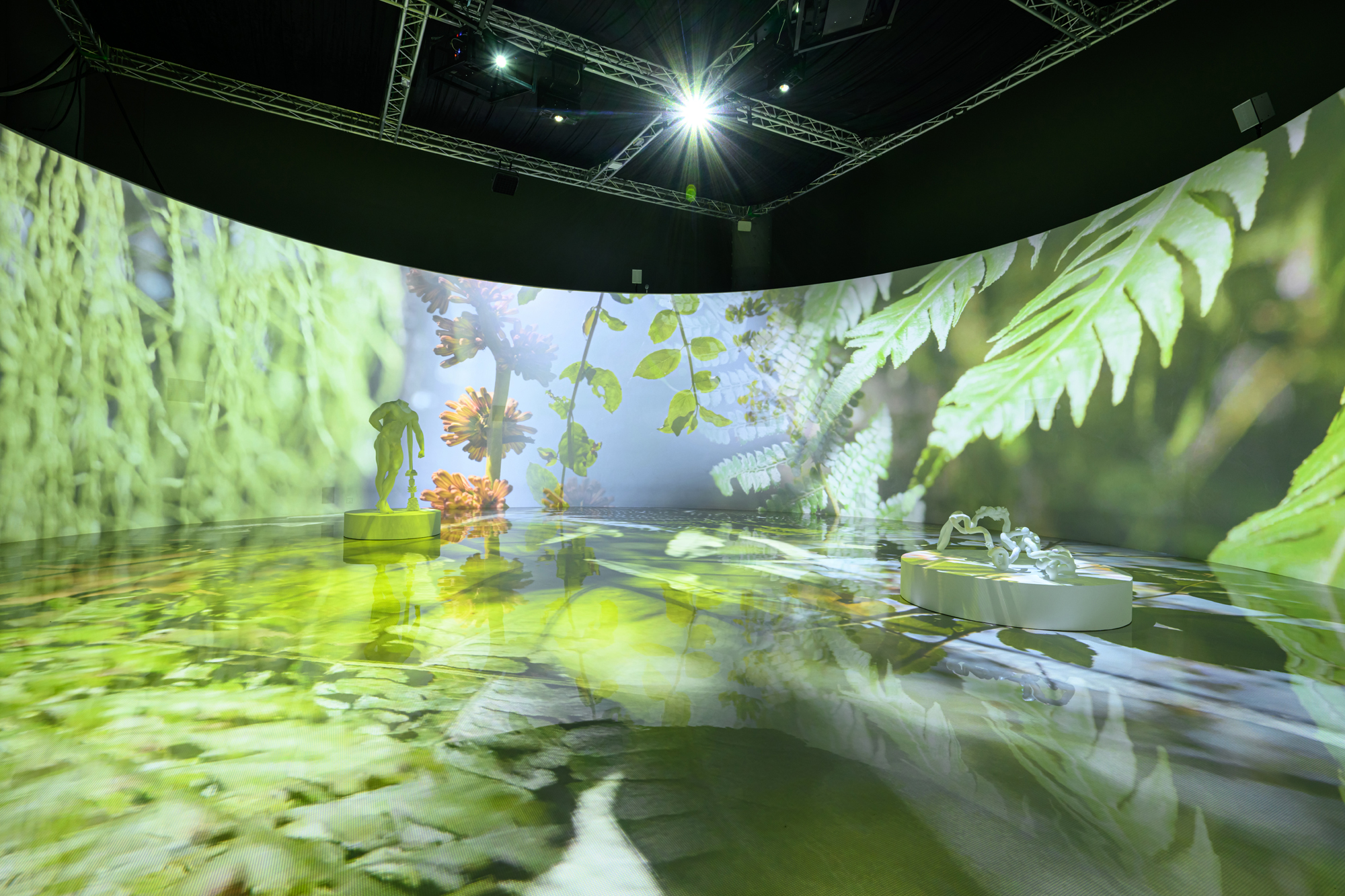
Ladies
2023
The Loves of the Plants written by naturalist and poet, Erasmus Darwin, in the 18 th century is a set of nature observation poetry based on a proposal made by Carl Linnaeus at the time, which classified plants based on their sexual characteristics. In the early stage of this plant taxonomy system, it was quite controversial to compare plant organs to human sex organs. However, this anthropomorphic way of imagining plants has become the foundation of today’s plant taxonomy. Through intricate biology observations, The Loves of the Plants presented the characteristics, senses, and desires of plants using anthropomorphic expressions, and female subjectivity was emphasized. The artwork, Ladies, presents a script adapted from three poems/three plants(Mimosa, Arum, and Cuscuta) written by Darwin and explores how humans perceived nature when this particular knowledge system was initially established. The content of this exploration is not intended as response to the age-old question of anthropocentrism; rather, emphasis is placed on tracing the driving force behind humans’ initial perception of the world. In the process of “seeing/perceiving/understanding”, human beings also carry out some kind of inner perceptual production, with imagination thereby evoked. The artists have pondered on the converging point of this driving force and the production of art, and they seek to use the three themes of senses, shapes, and narratives to construct Darwin’s imagination of plants. “Anthropomorphism” is based on an awareness that exploit all things, but it is also a biological instinct that empathizes with all things.
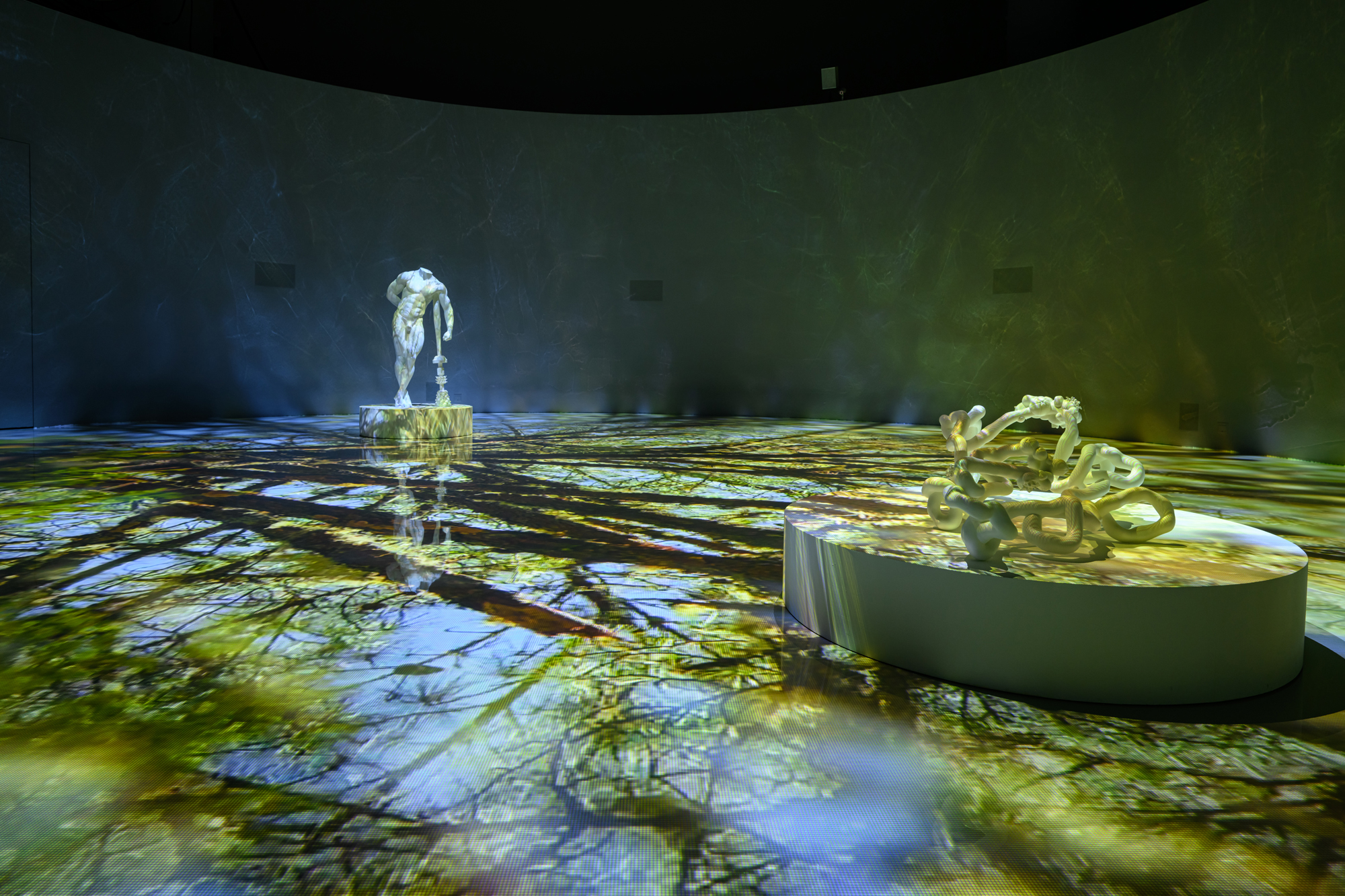
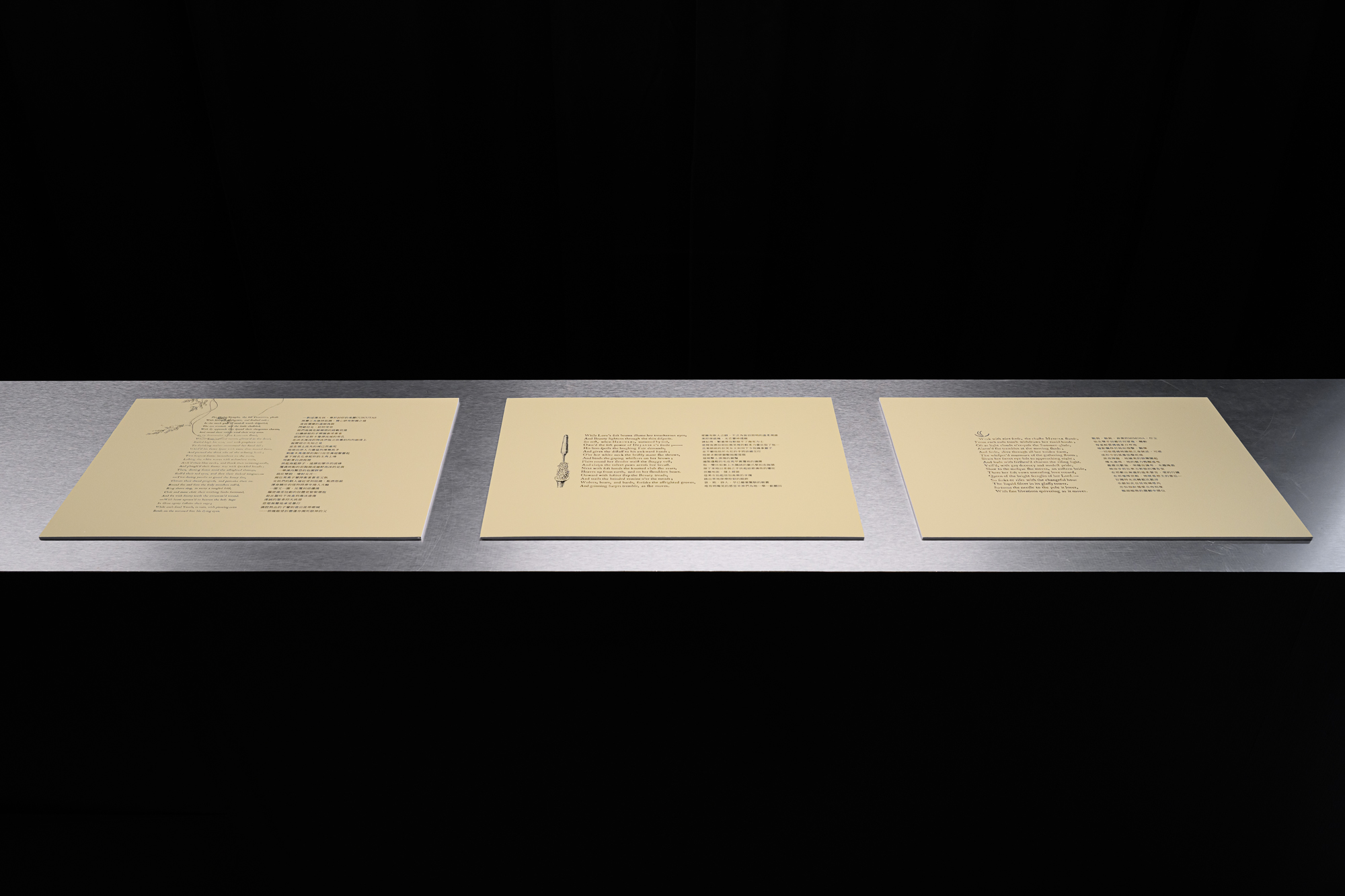
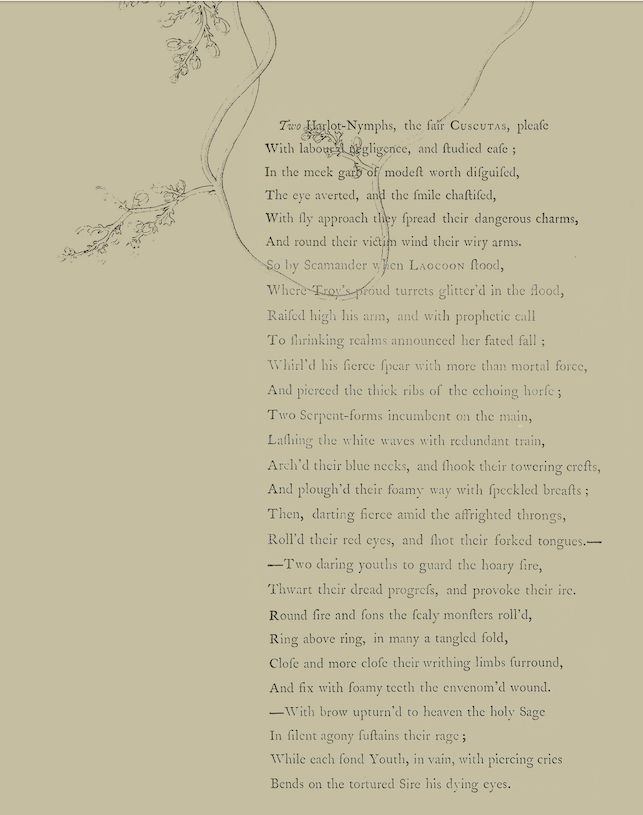
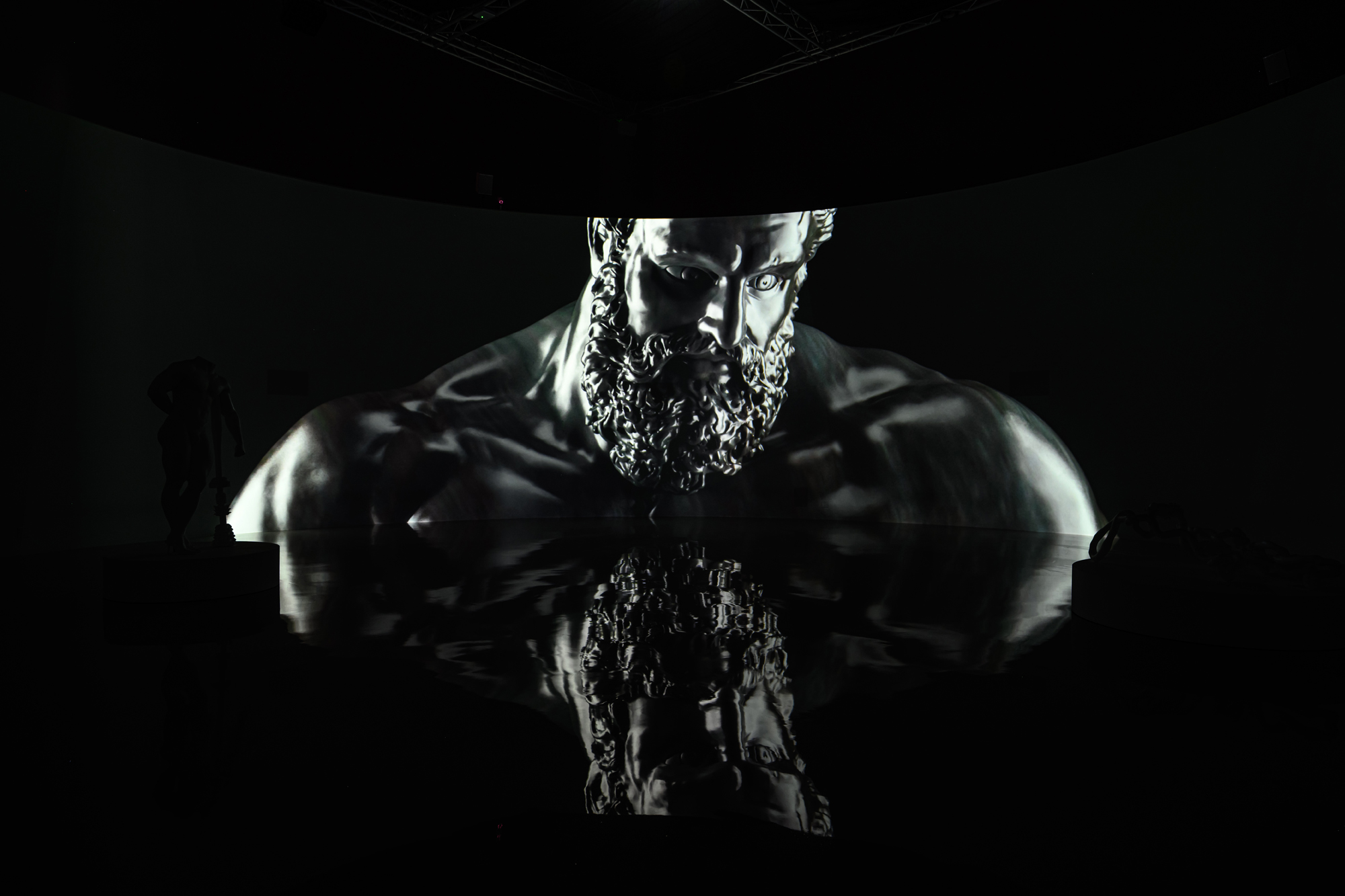
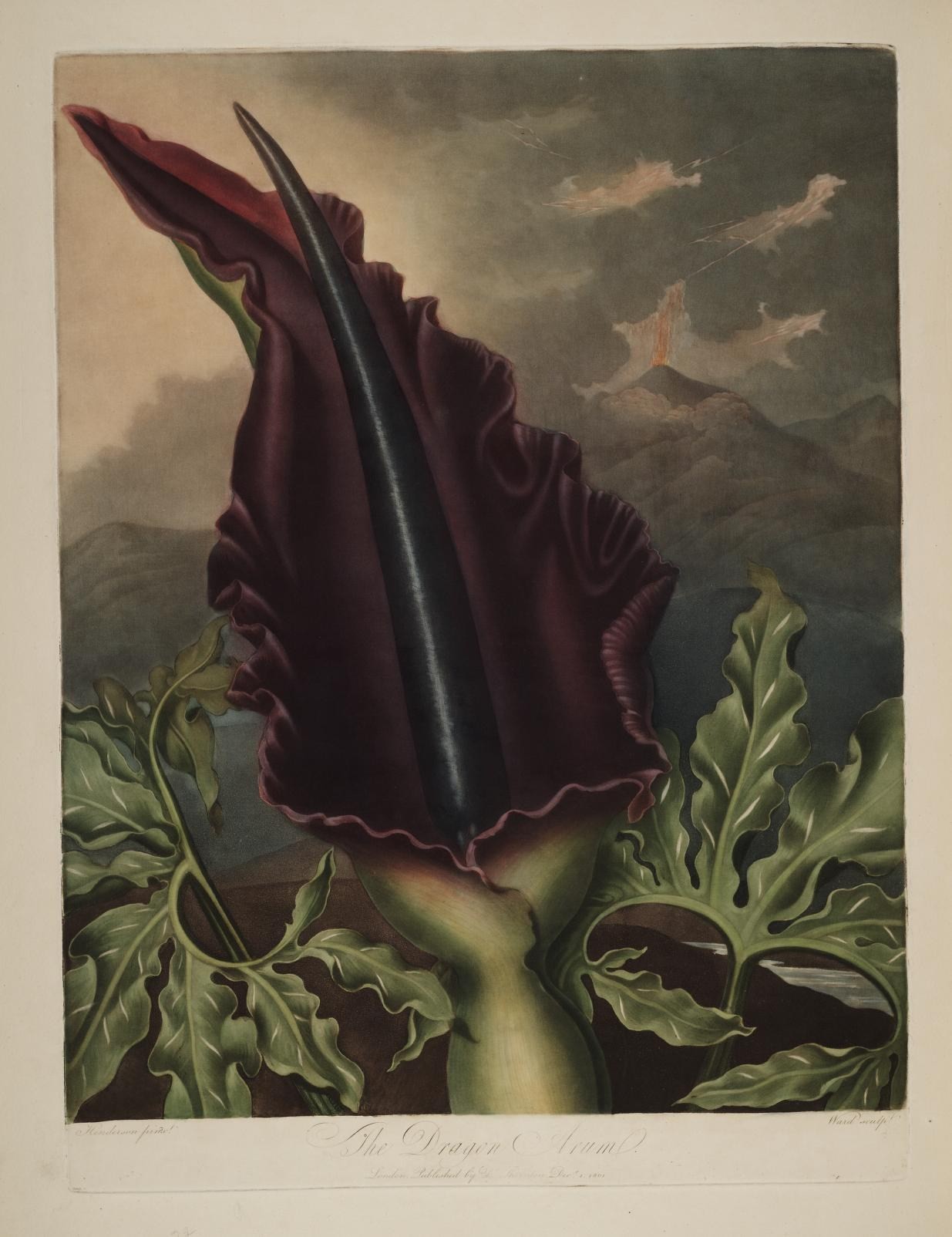
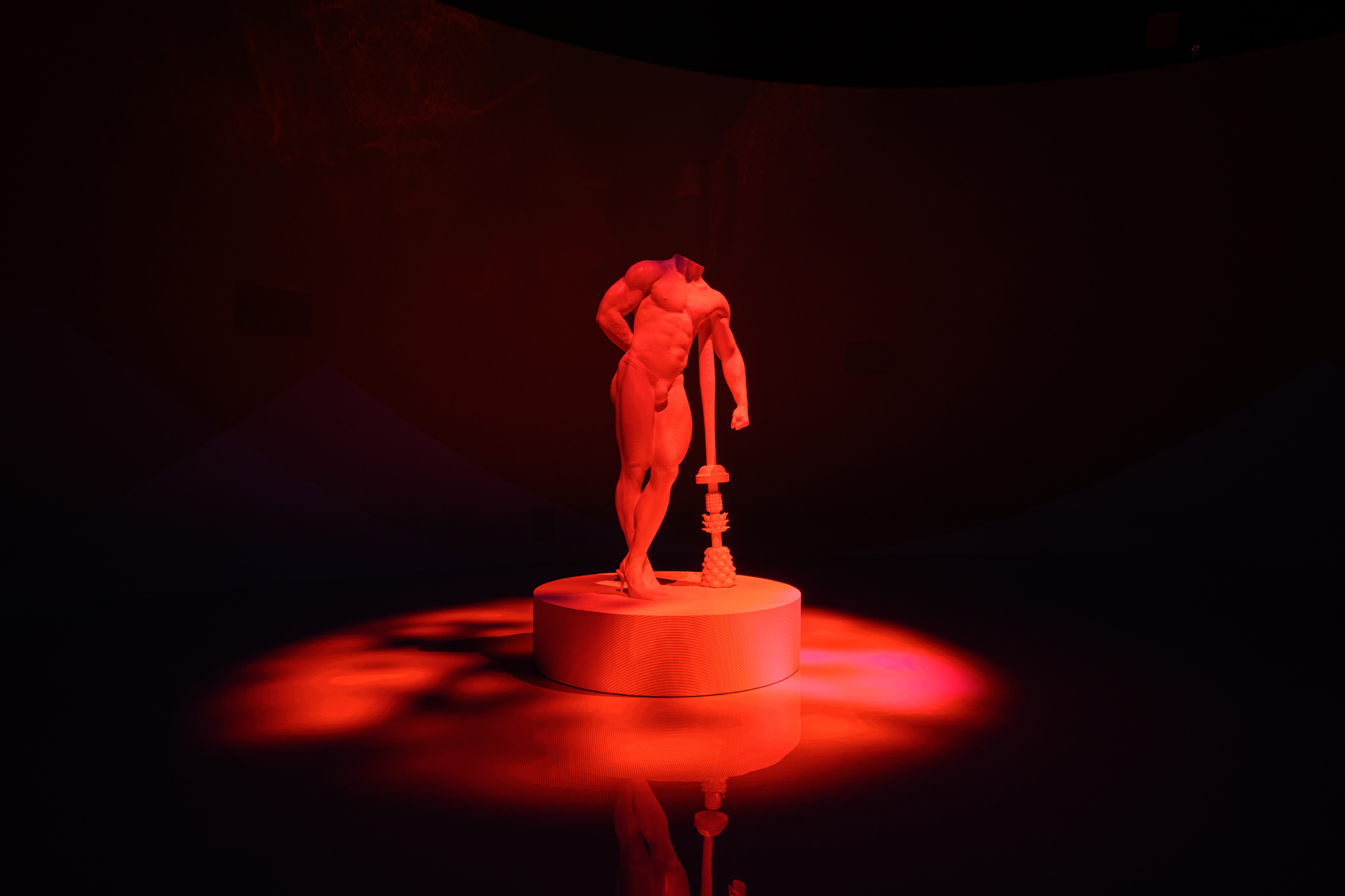
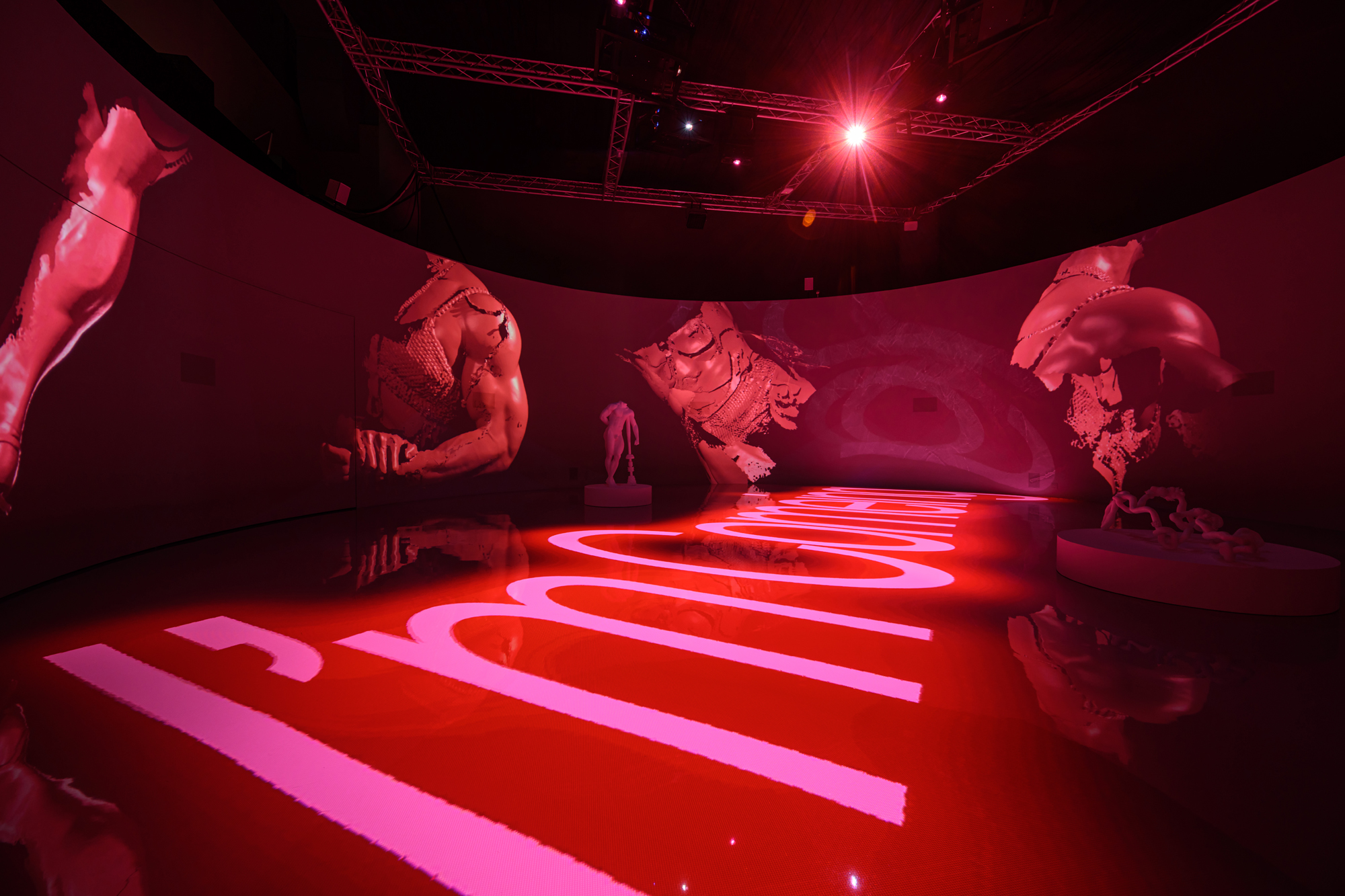
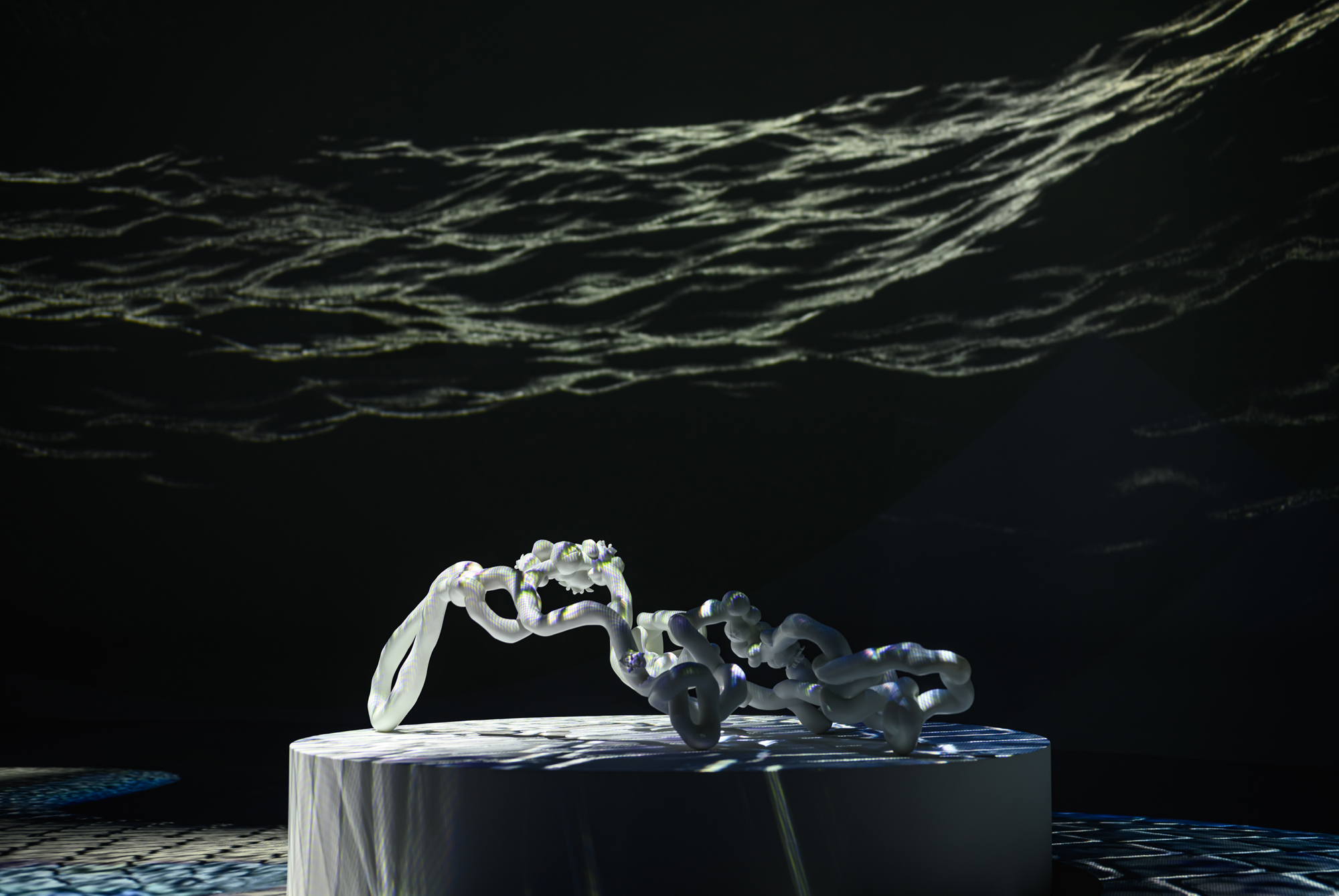
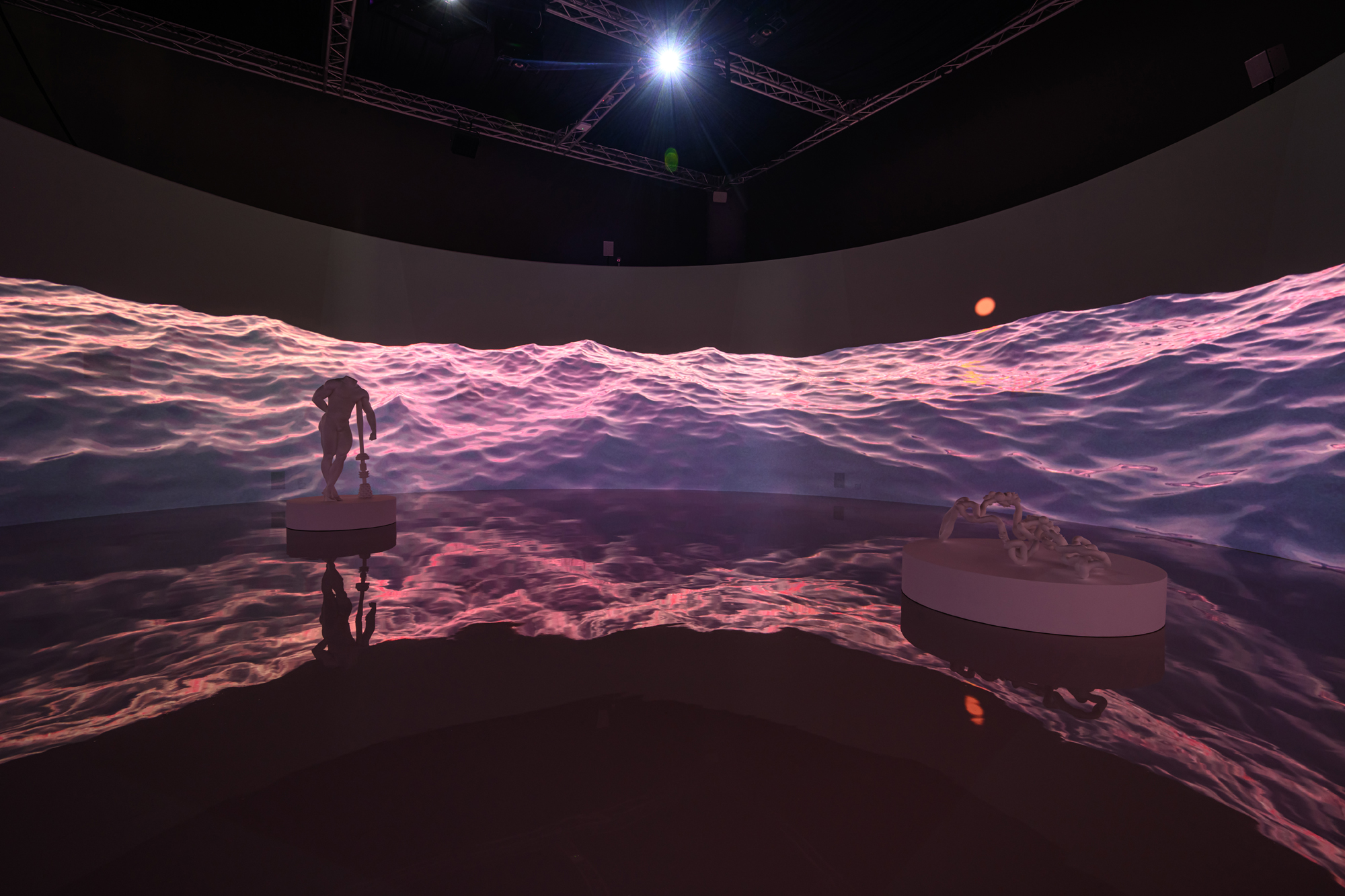
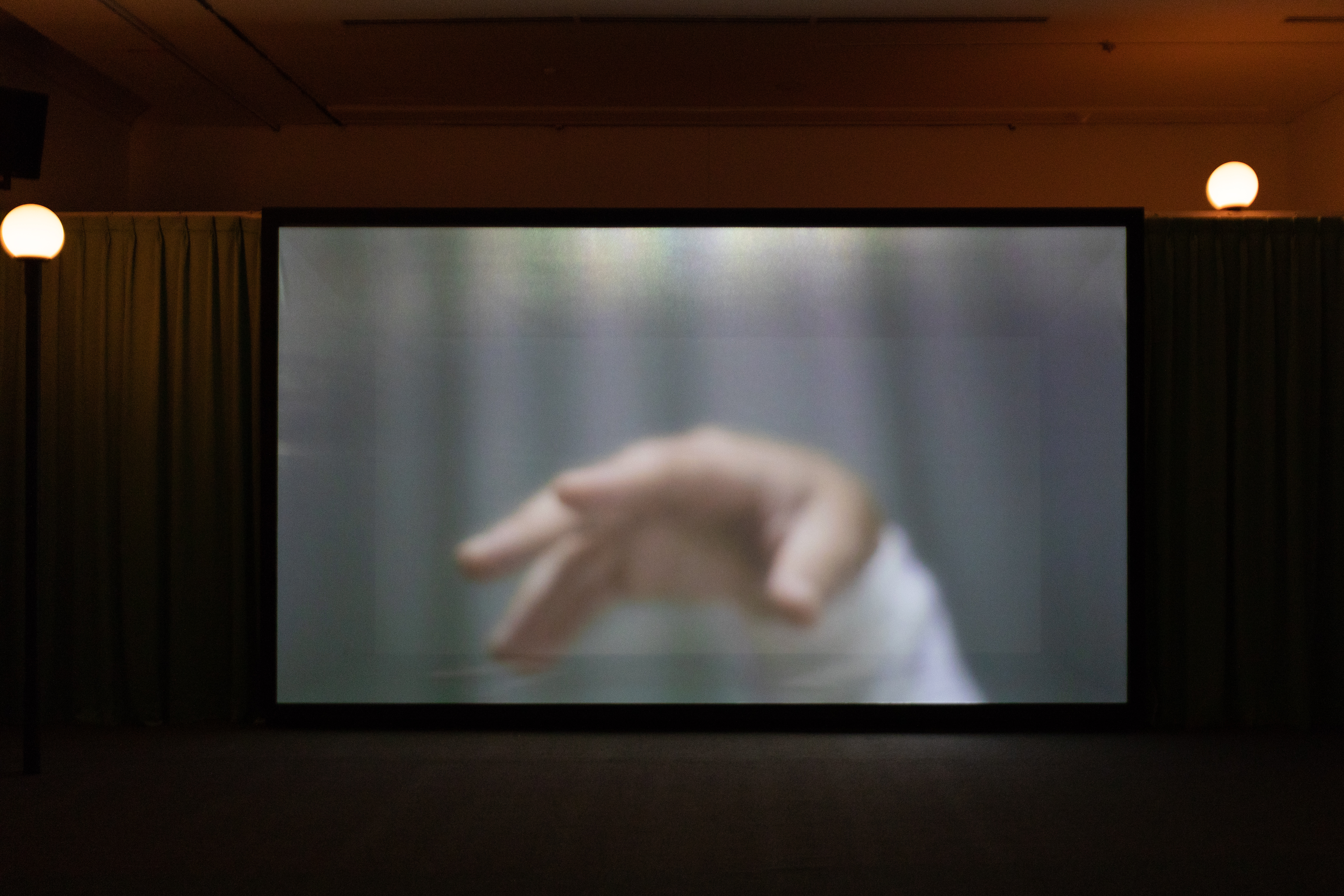
Escape Route
2021
The two apocalyptic prophecies following human and natural catastrophes had failed, we can see numerous rehearsals for apocalypses and salvation in human history. Many new religions, anarchis and utopianism are all anticipating a way out of this unanswered confusion under rapid modernization overpopulation, an intertwined global economic and political structure, ecological crisis, and global heating, with an aim at a solution to reconstruct the disrupted reality After the course of modernization starts to accelerate, some people drop out of the track in an attemp to venture another escape route in a chaotic world by returning to the primitive, spiritual, pure state on mind, while hoping to be catapulted into the next human era via this escape route. For adherents of apocalyptic prophecies, the escape is apparent and coexistent with real-life experiences. On the other
hand, such ideas related to escape don't just cease to exist when it comes to the life of the genera public. They become fragments constituting an integral part of our contemporary culture, entering the consumerist market system and deploying their troops in different forms in our daily lives. By reconstructing the incidents, the absolute territory of personal belief is probed. It is the most
primitive, the purest, the most universal spiritual field for humankind that is nearly impossible for on to convey to the external world.
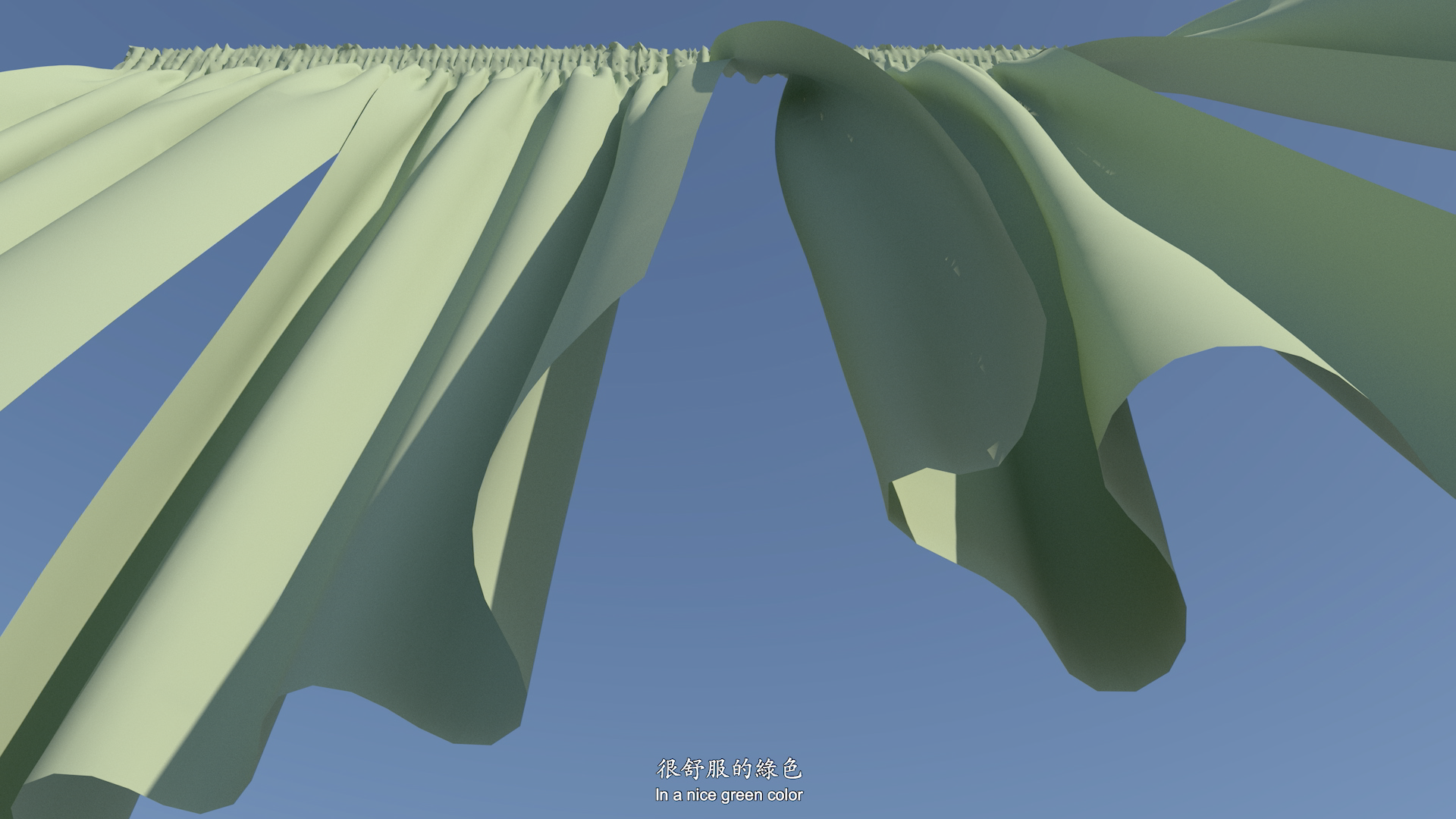

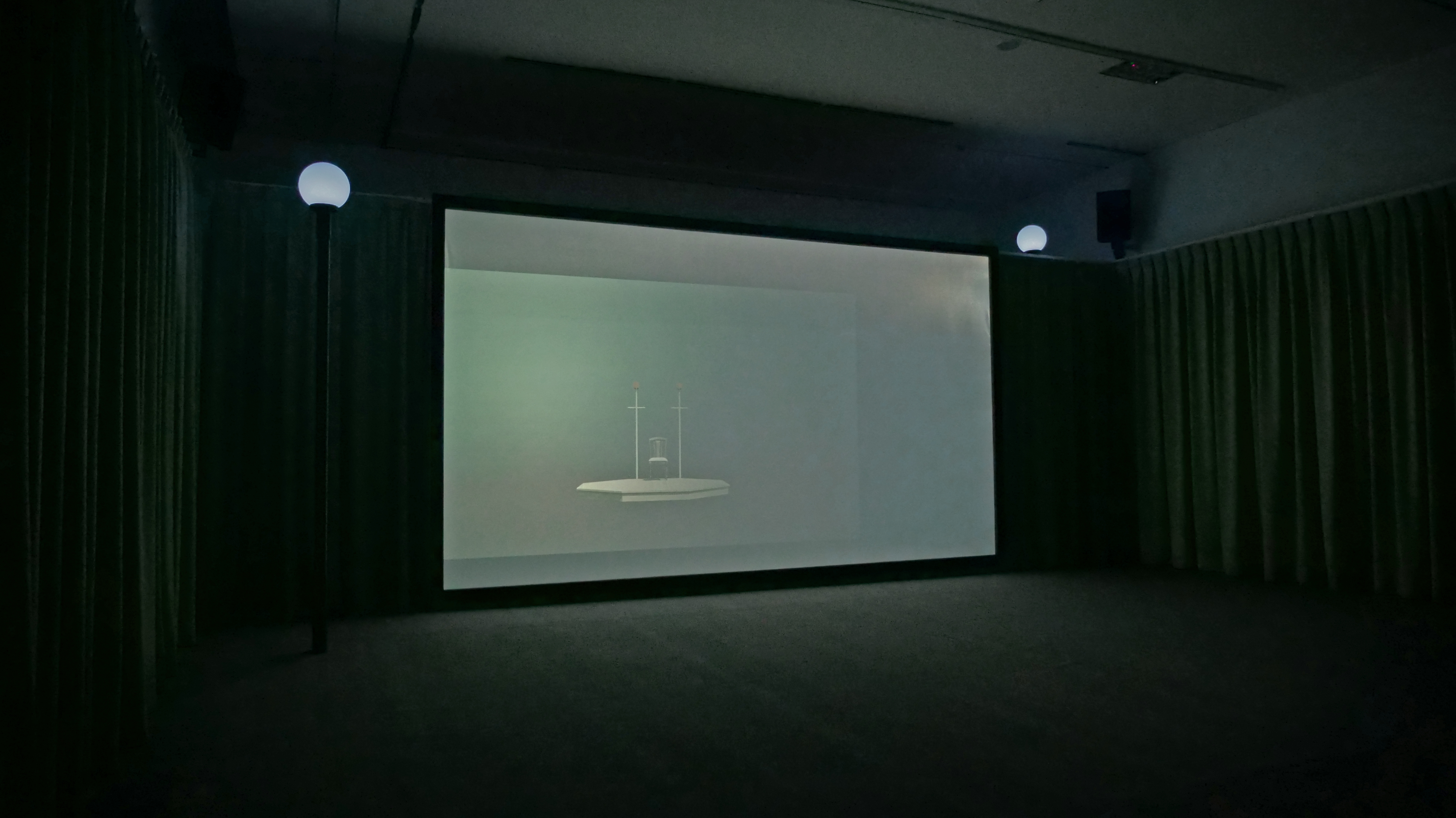
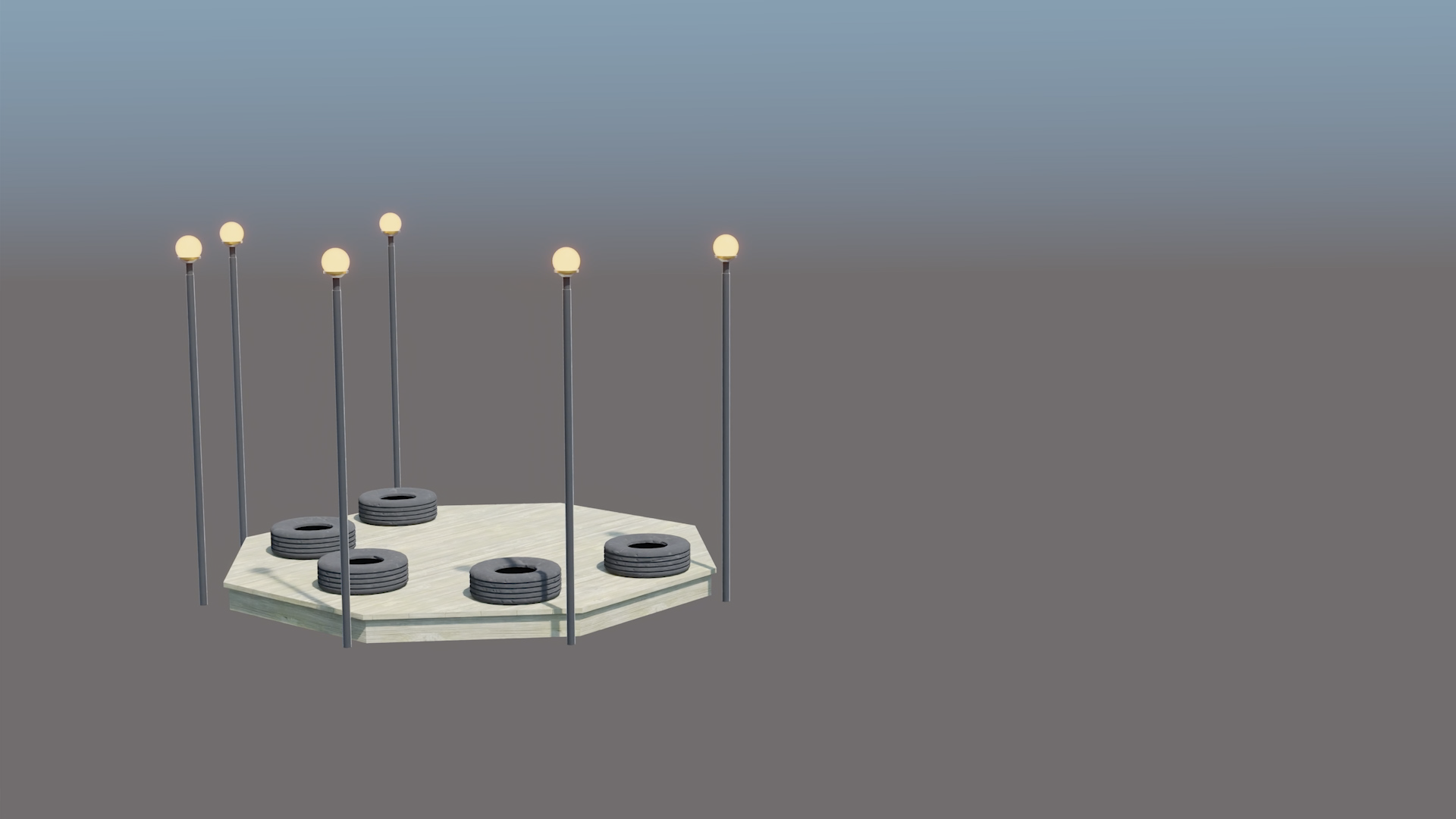
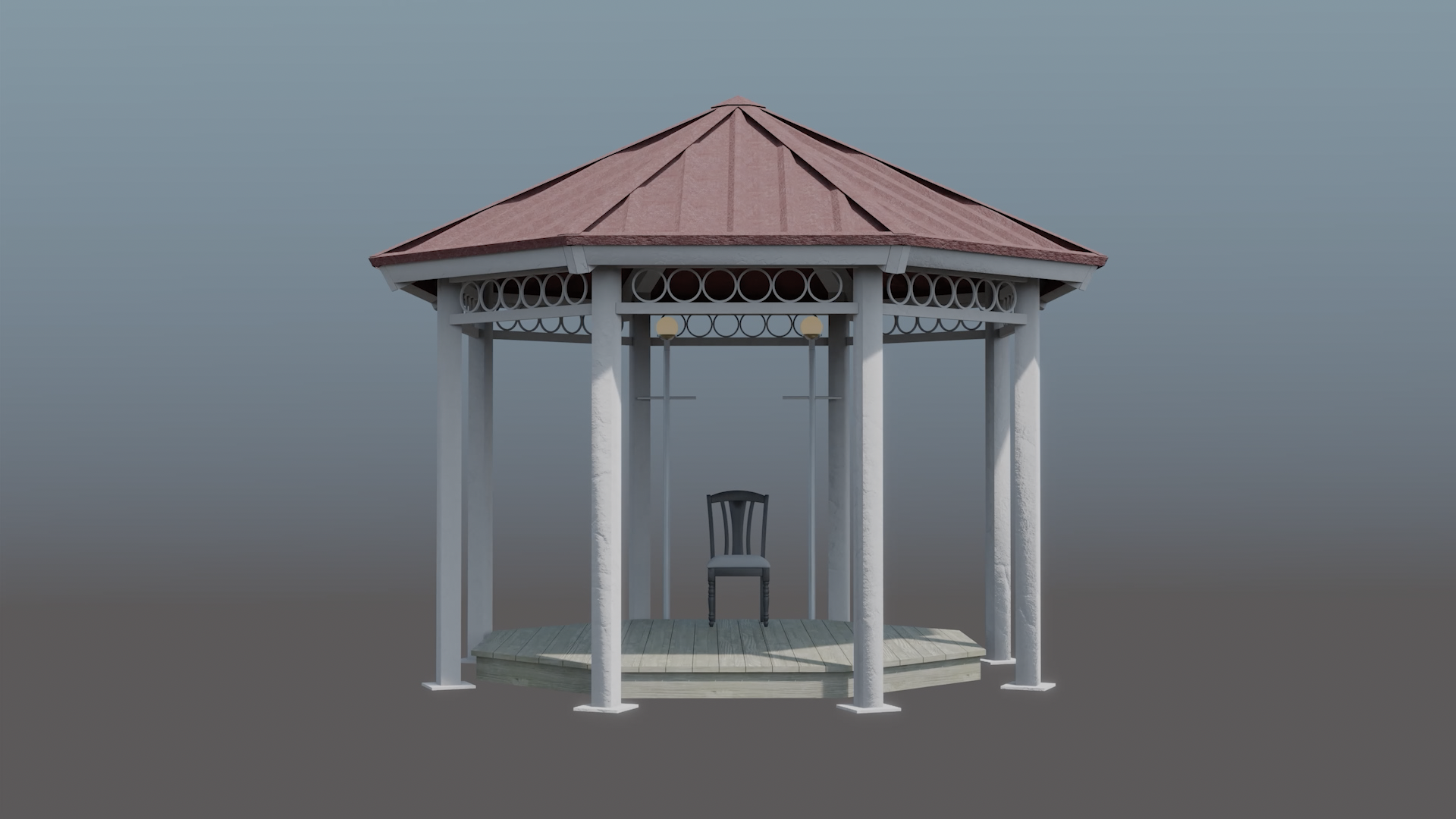
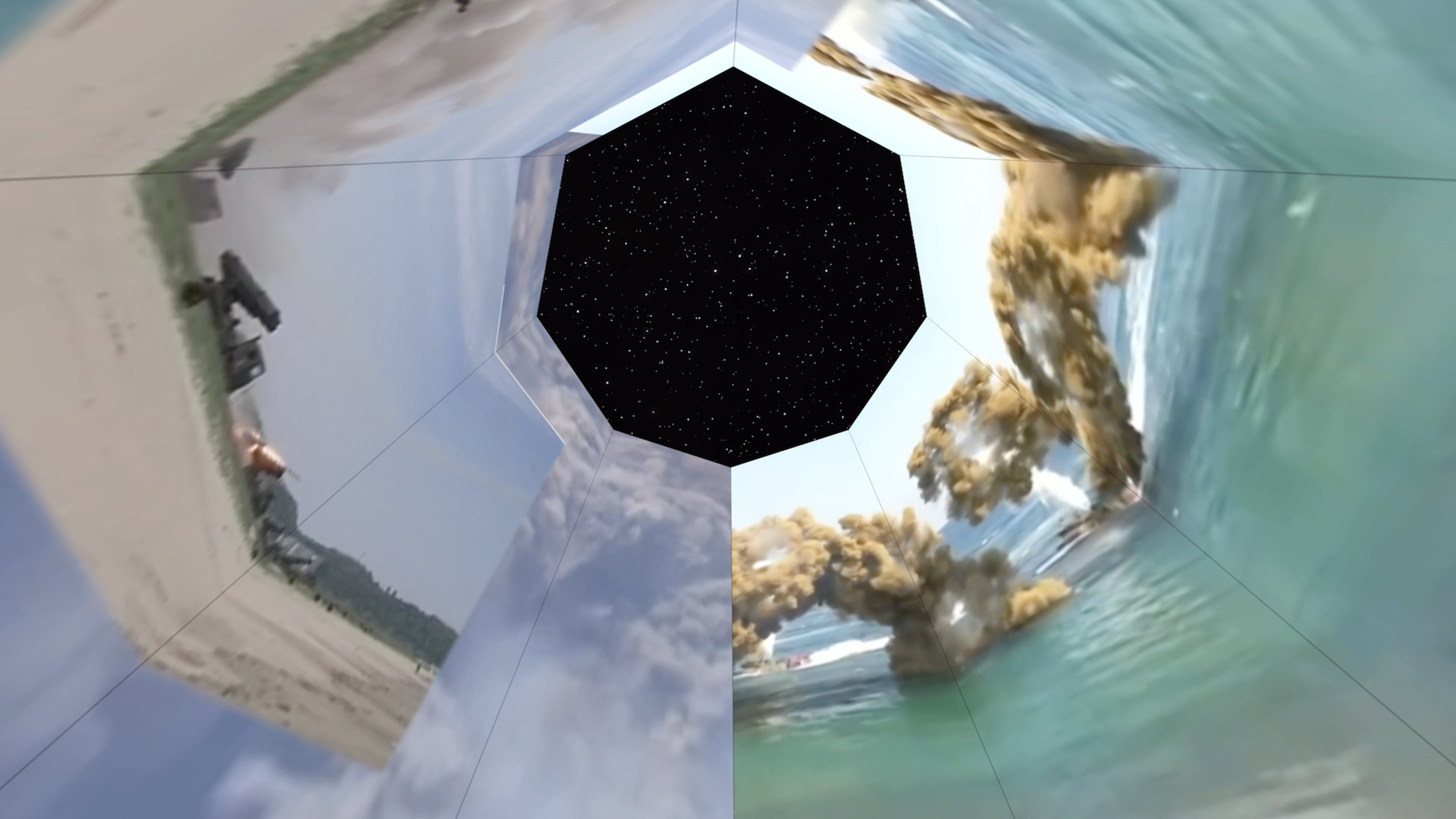

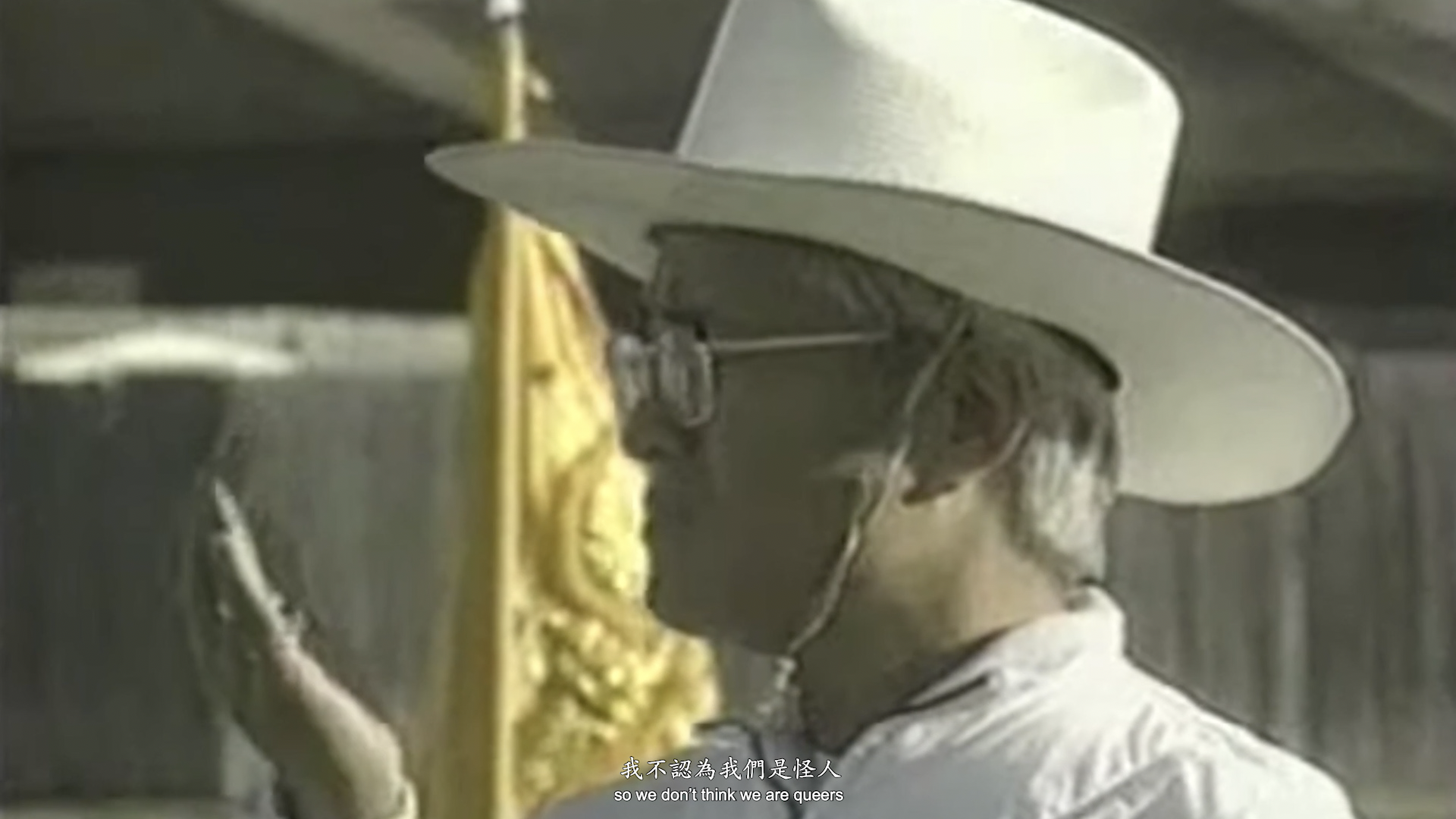
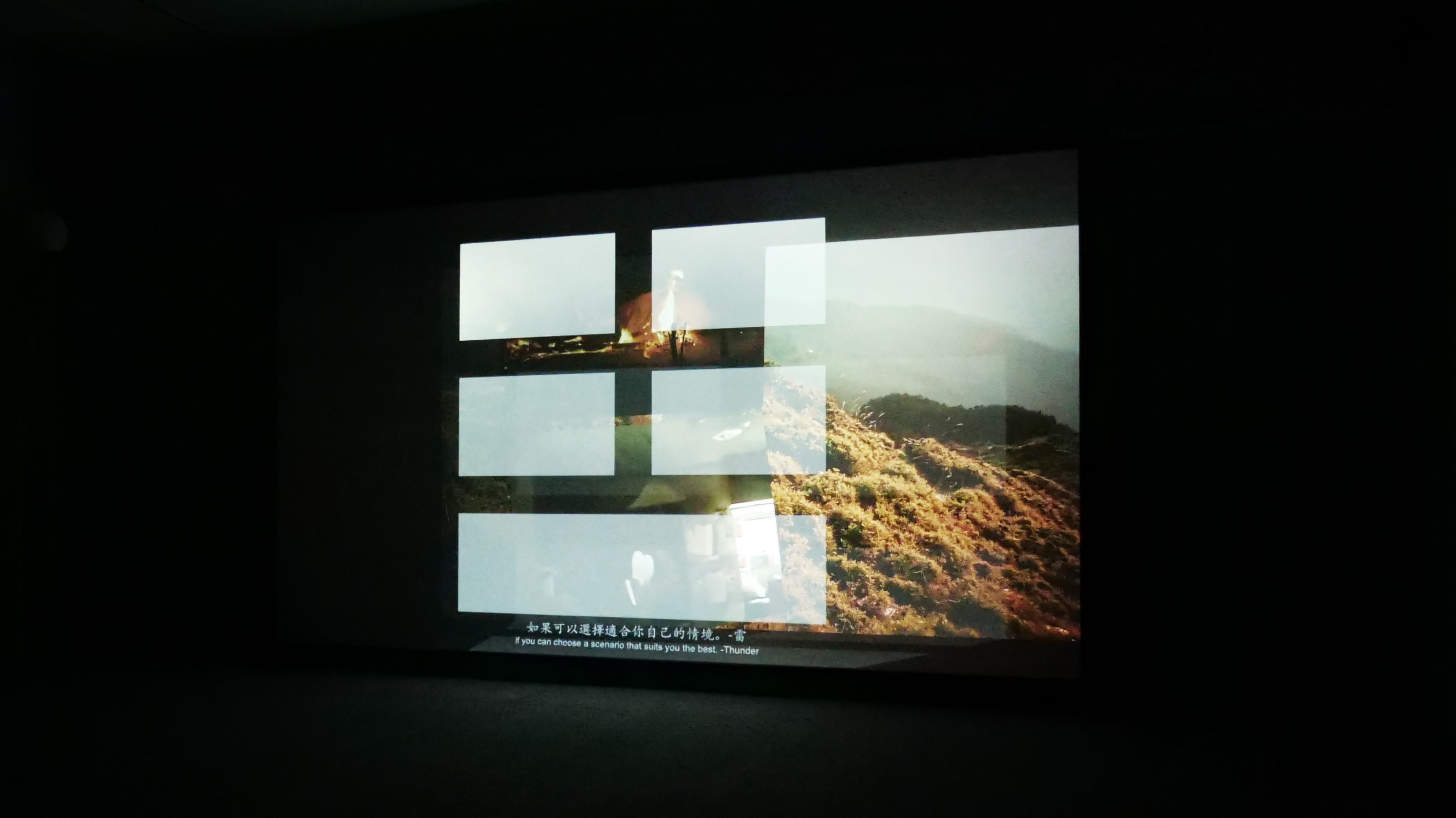
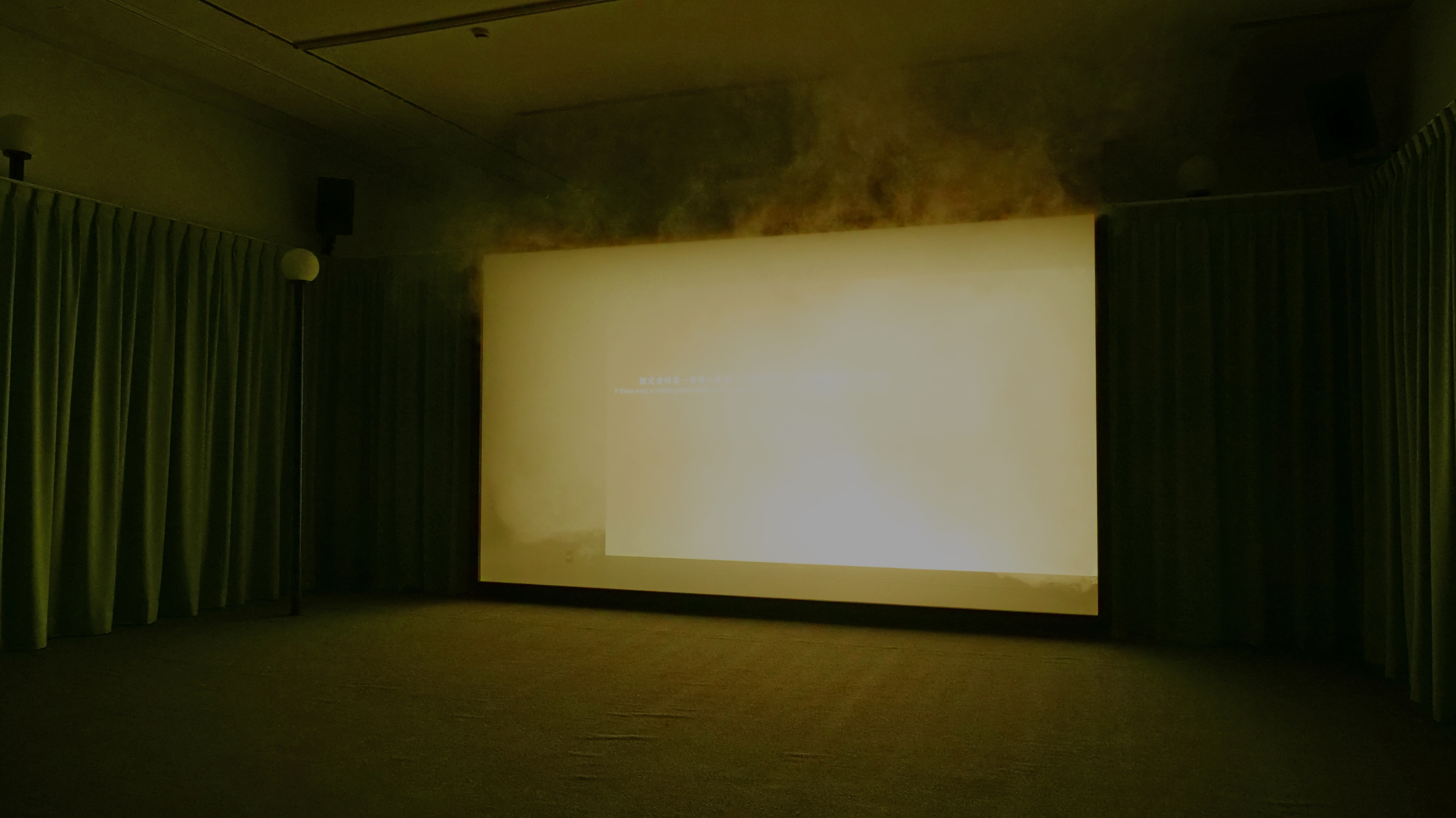

If Narratives Become the Great Flood
2020
The Great Flood is regarded as a common myth in numerous cultures in the world. There are records of floods found in 254 ethnic groups and 84 languages. Regarding the eternal statement of human death and rebirth, the Great Flood is always believed as the most representative myth among all these catastrophes. As rivers converge into the sea, these detailed and continuous narratives of myth have been accumulated by day and night over years. Despite the dissemination through oral and written languages that vary and transform throughout generations, they all carry a similar and complete structure of narrative This project tries to explore and capture certain common characteristics of narration among “myth”, “consciousness” and “contemporary image” , merging into a dreamlike script with fluidity of consciousness, through a fragmental, repetitive, and deconstructing structure of narratives. The
contemporary images are applied as the metaphor of various forms and symbols of ancient myths, in an attempt to reconstruct the way how we perceive the world in the modern era. In this sense, “If Narratives Become the Great Flood” does not intend to explore further about the authenticity and meaning of the myth of flood. The genre of narrative of “The Great Flood” is considered as the tree-like species classification of taxonomy in the modern era. The dissemination of how the myth creates all of the creation in the world is as how the flow of river from the mainstream into different branches of regions.
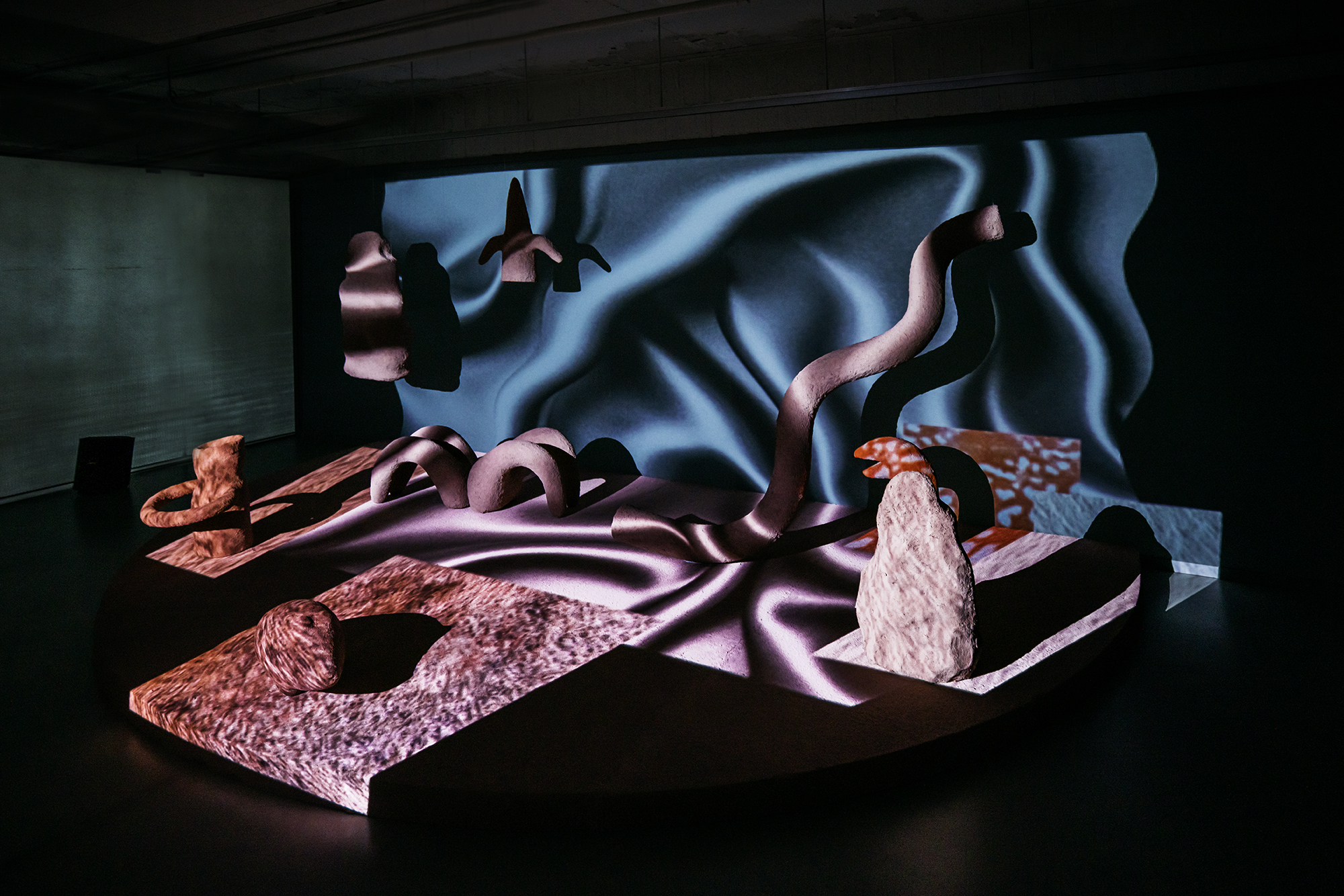

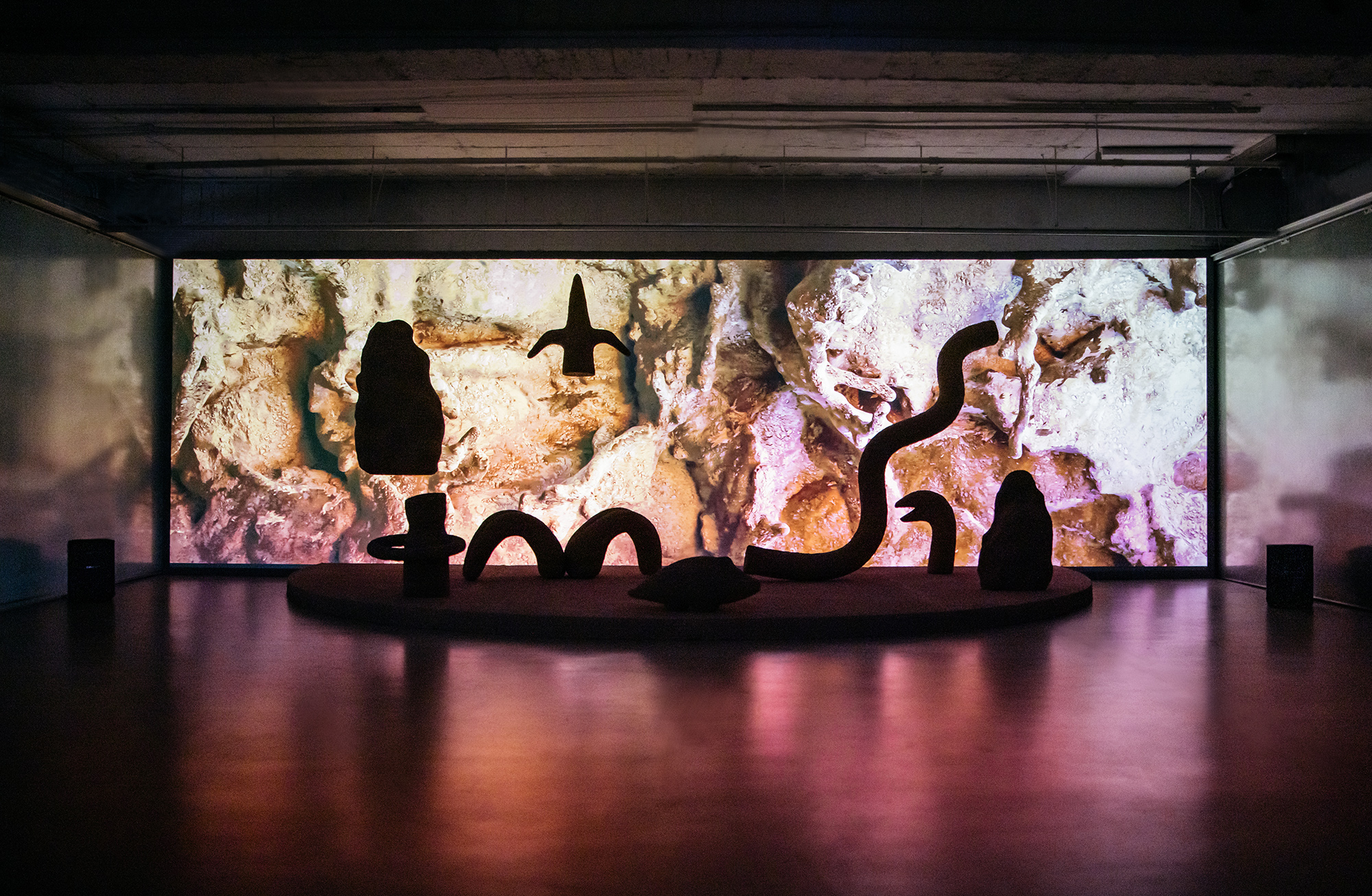
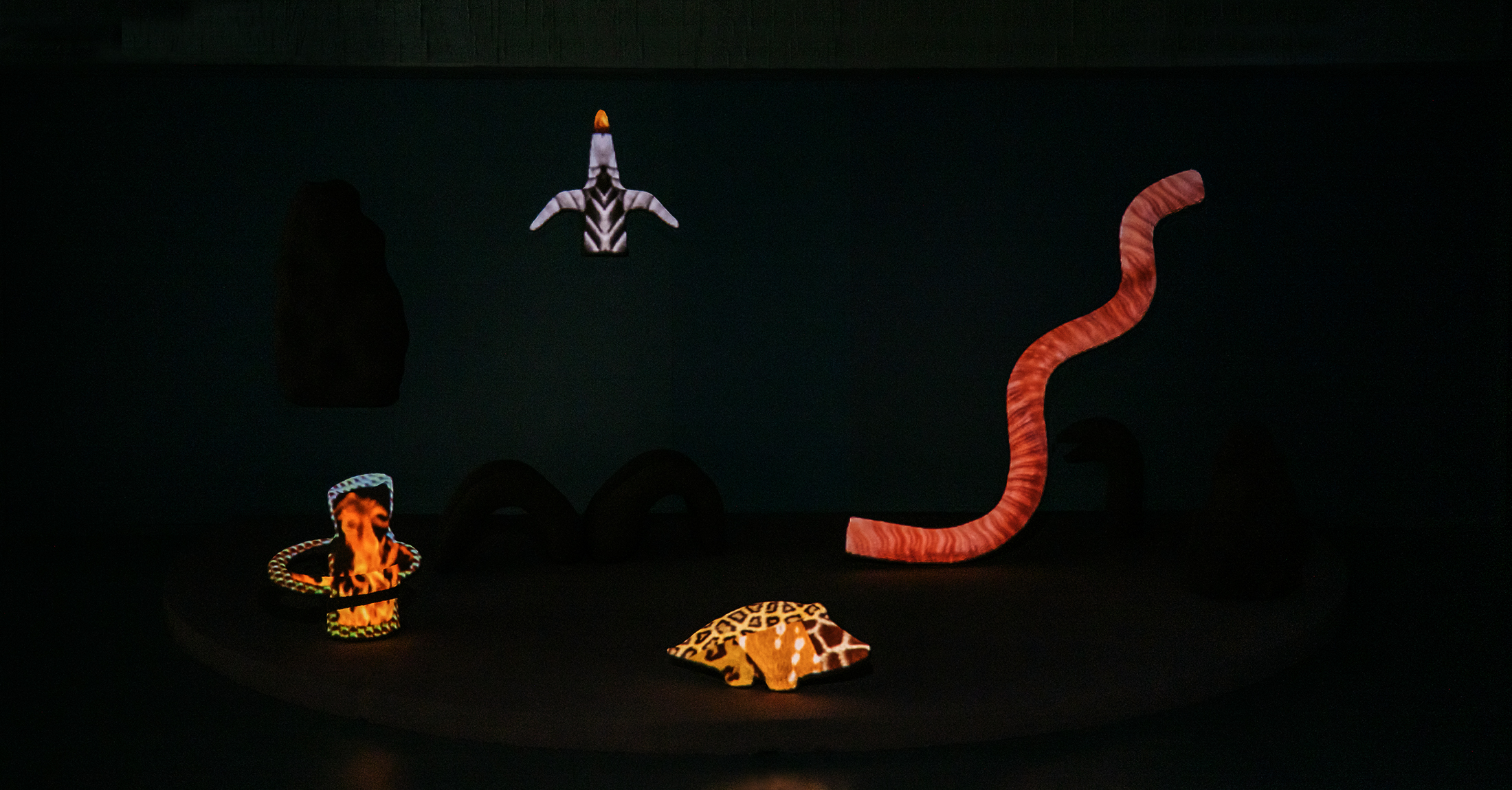
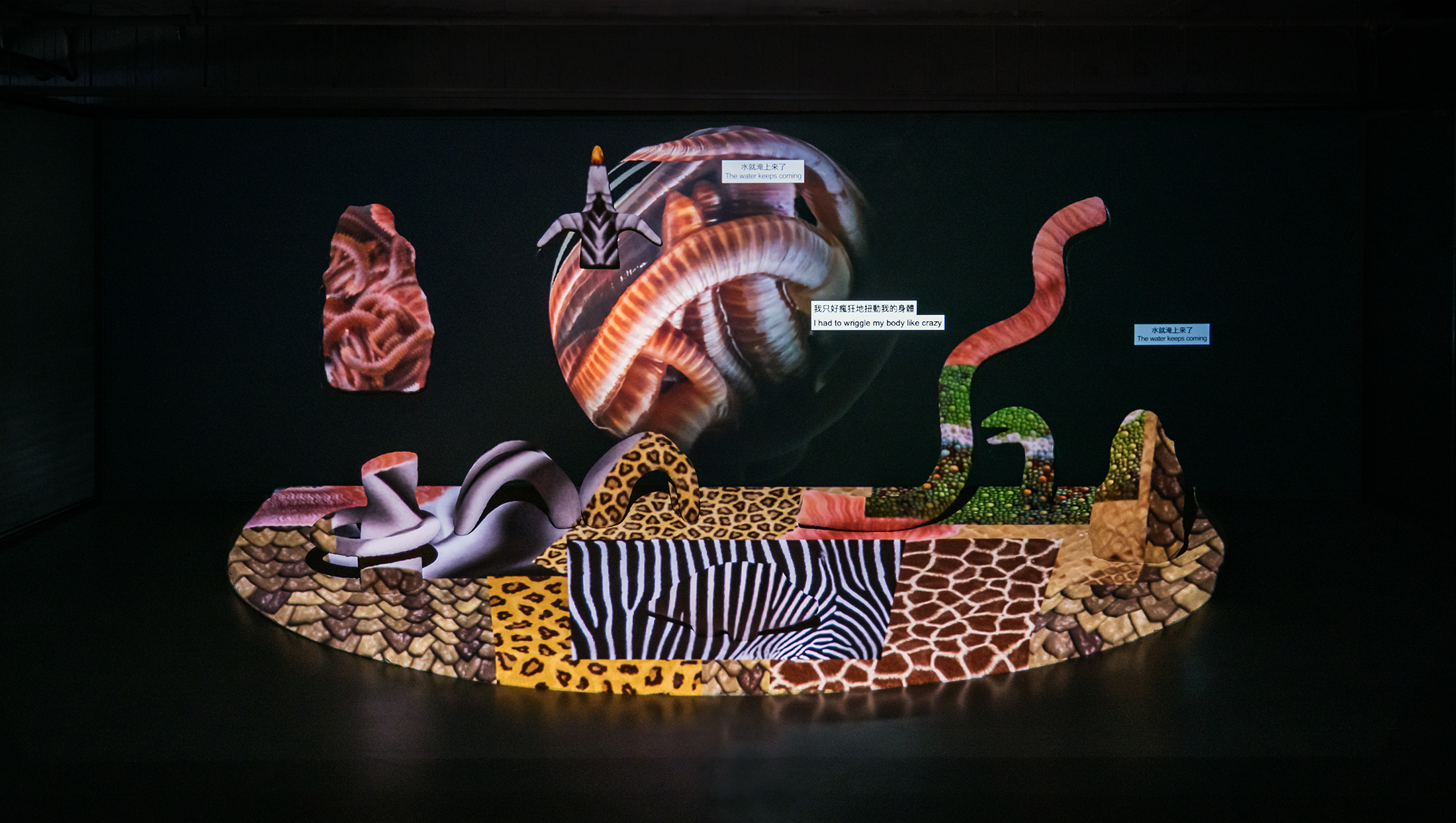
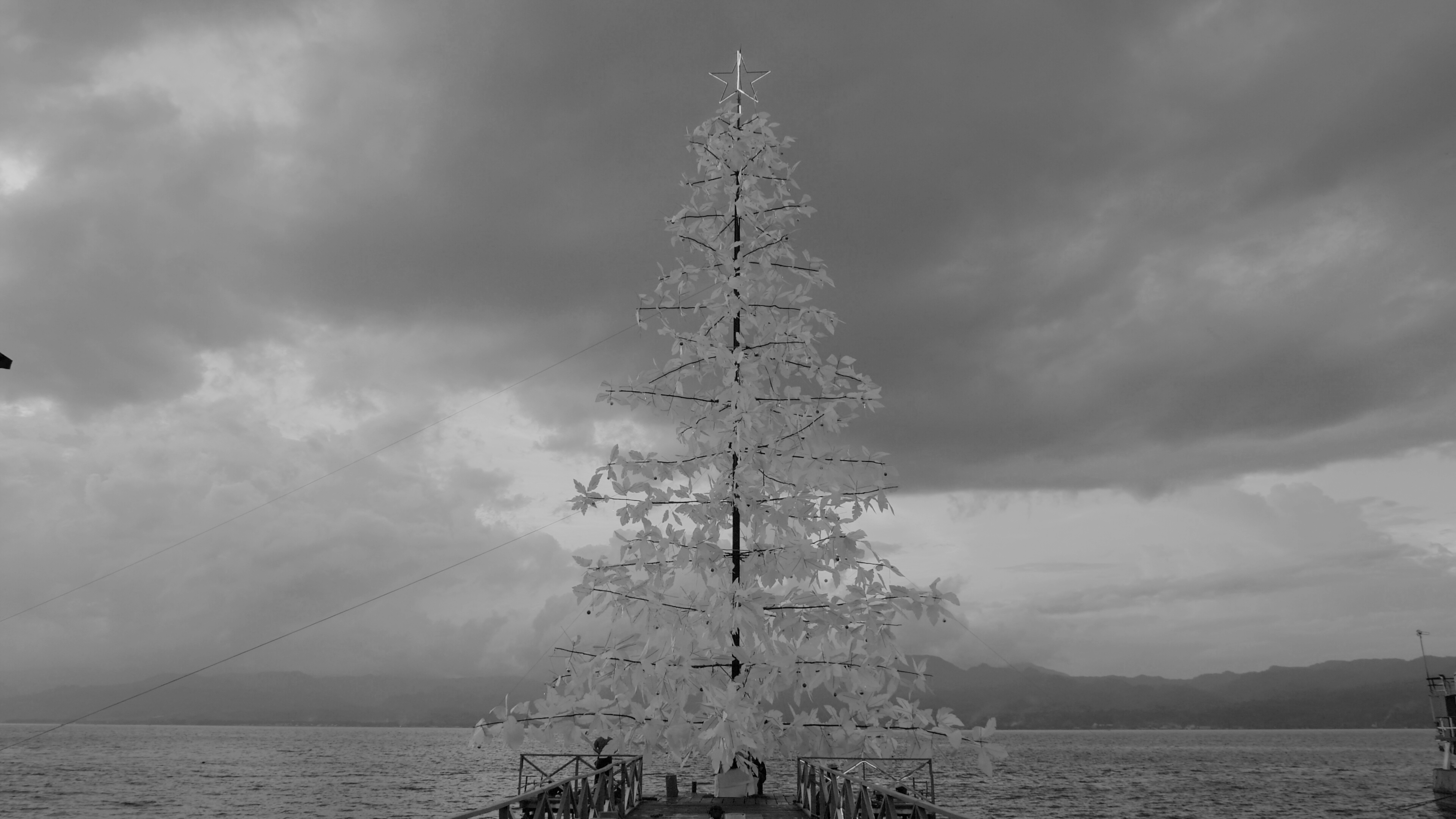
Caecus creaturae.
2019
32’53” 27’37”
Two Channel Sound/Video Installation, color, stereo, 24 Acrylic Drawing
Georgo Eberhard Rumphius (1627-1702) was a biologist employed by the Dutch East India Company in the 17th century, his important work Herbarium Amboinense covers up to 1,200 botanical species, 930 with definite species names, laying the biological groundwork of Maluku, Indonesia. The extensive research data left by Rumphius also indirectly led to the formalization of Carl von Linné’s binomial nomenclature. Some supporters even believe that Linné had stolen Rumphius' research. This era of big nomenclature became the beginning of species documentation and has evolved into the scientific basis of our current understanding of plants and animals.
In contrast with other biologists, Rumphius became completely blind due to glaucoma in 1670, but was able to continue his research work on species. If we look at Rumphius' descriptions of plants in his notes, we would realize that he used a large number of comparisons to describe species, including olfactory and tactile ones, and he even described plants with human personalities. By using a personal and perceptual interpretation to remember, map and document these creatures, he had created another kind of abstract database in his mind.
The Cabinet of Curiosities is a collection of Liu Yu’s research and extended interpretations of Rumphius from 2018 to the present, including documents on Rumphius, dozens of drawing exercises, and two documentaries. The text of the drawing exercises is from Rumphius' book The Ambonese Curiosity Cabinet, in which the forms of the species are transformed into abstract textual descriptions. Liu Yu attempted to retransform Rumphius' adjectives into images.
Liu's study of Rumphius does not focus on the reorganization of natural history, but on capturing a certain way of interpreting the world by human beings. Comparing the world we know after the scientific era and the world of primitive cultures, is there still some kind of sensibility interwoven in the way people interpret everything? In either cultural system, the process of "knowing the world" requires another kind of reverse productive activity: the explosion of imagination, which is also some kind of original state when art is created. No matter how hard we try to depict more things in this world, whether through "comparisons," "personification," or "metonymy," we still fail to describe what makes humans frenzy.
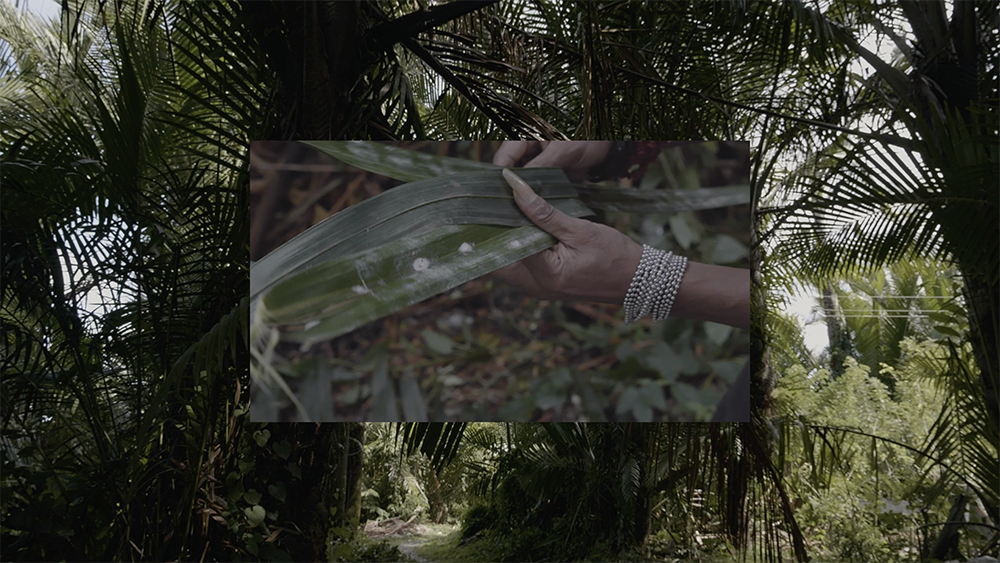

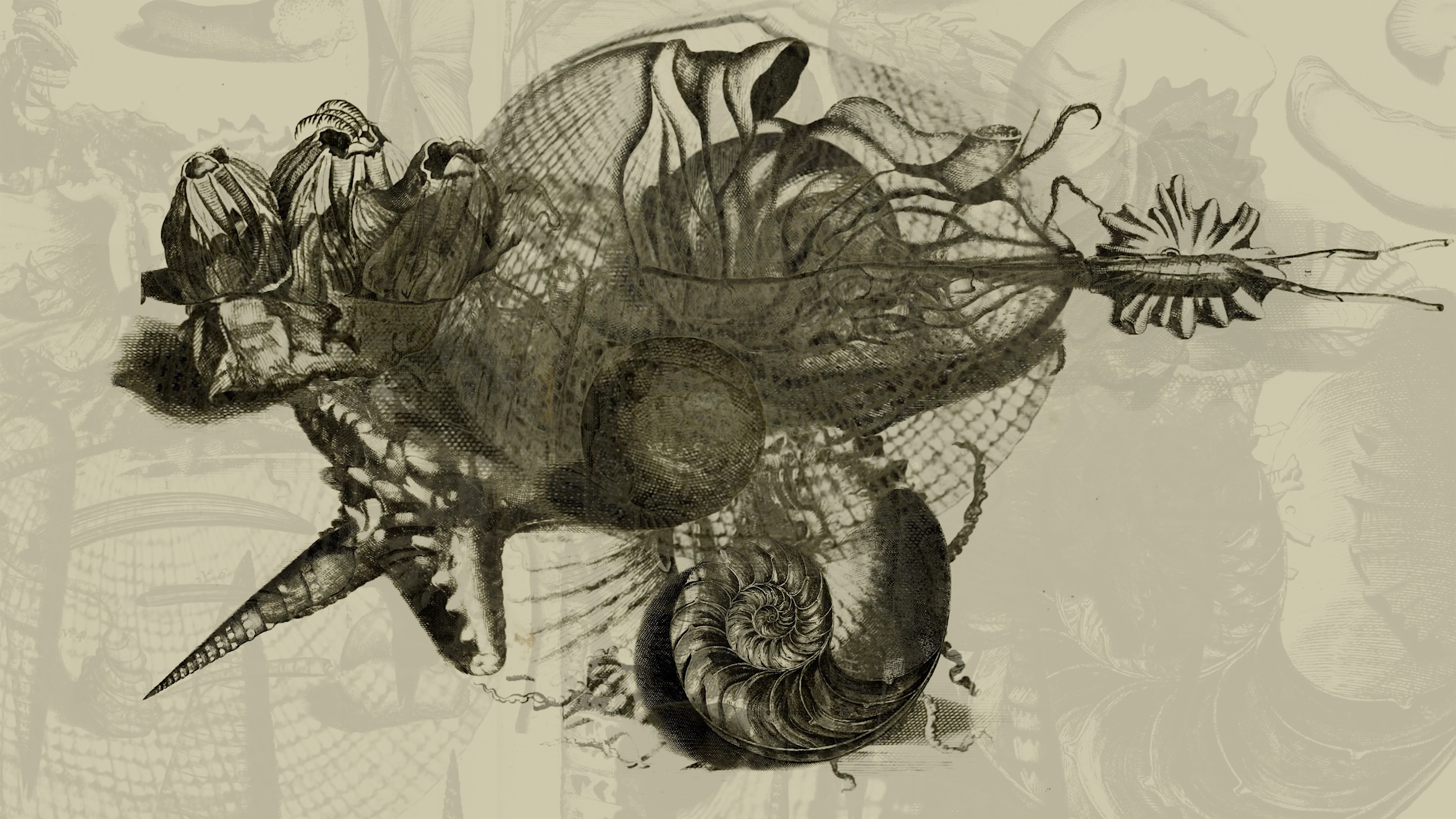
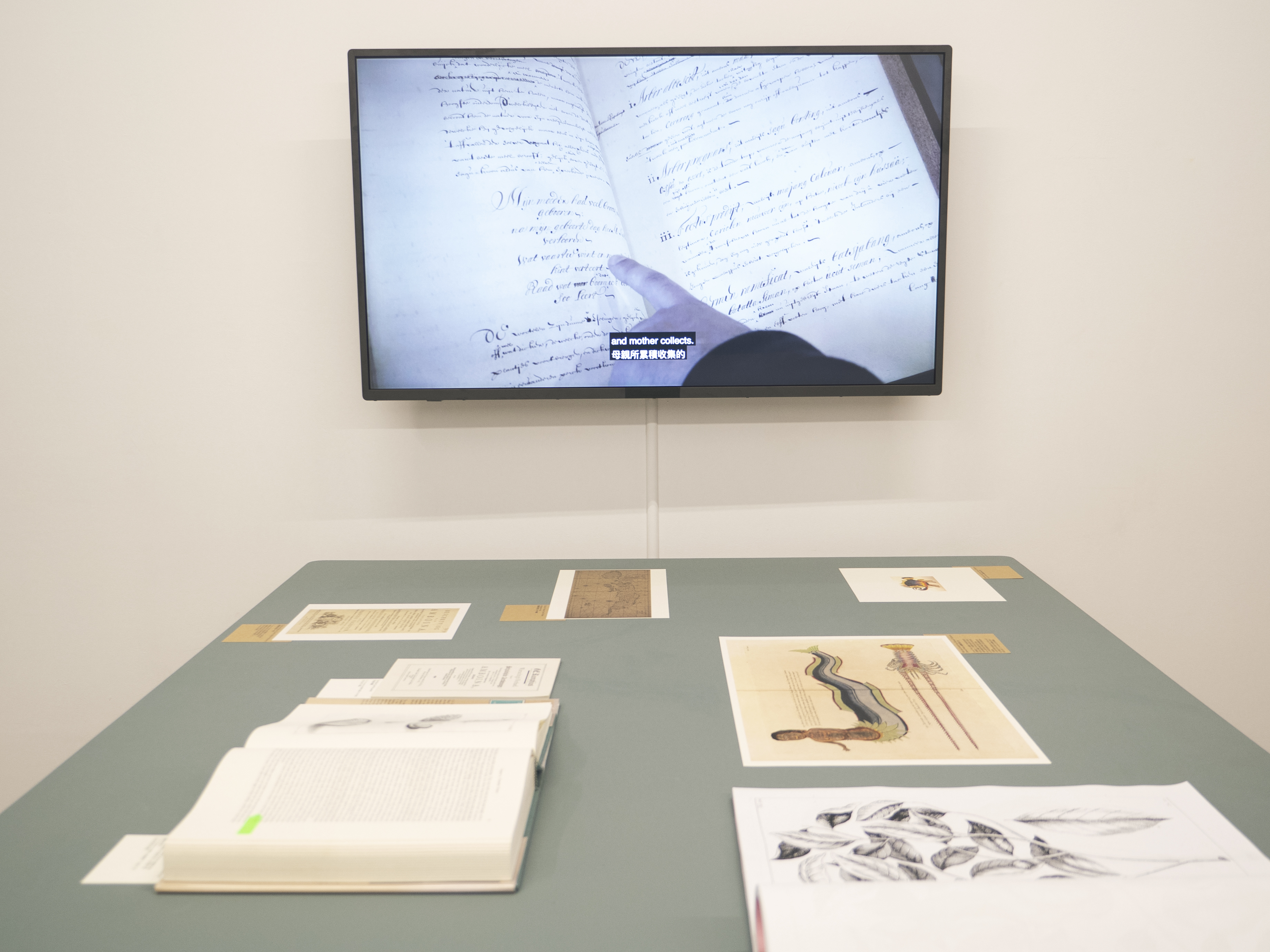
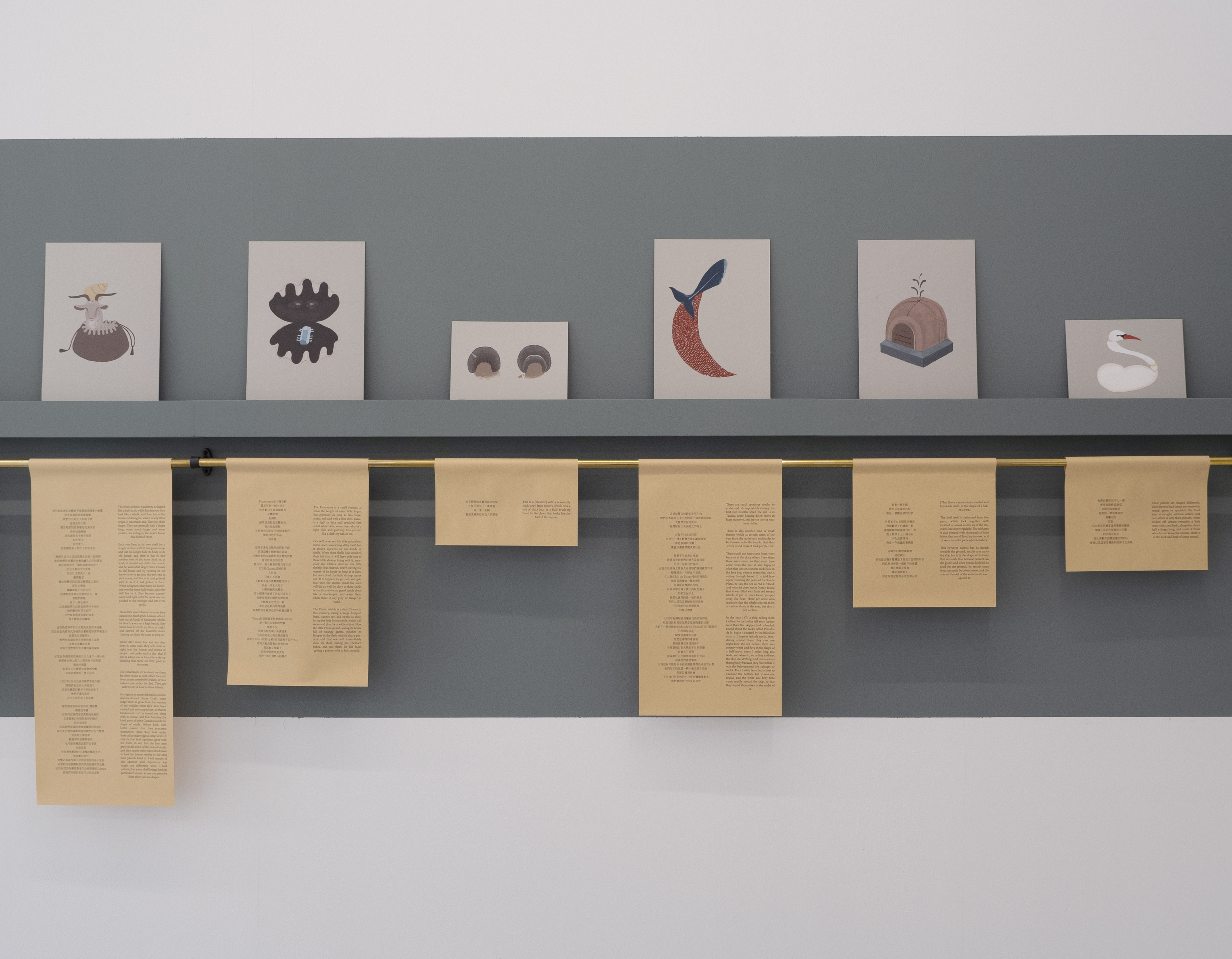
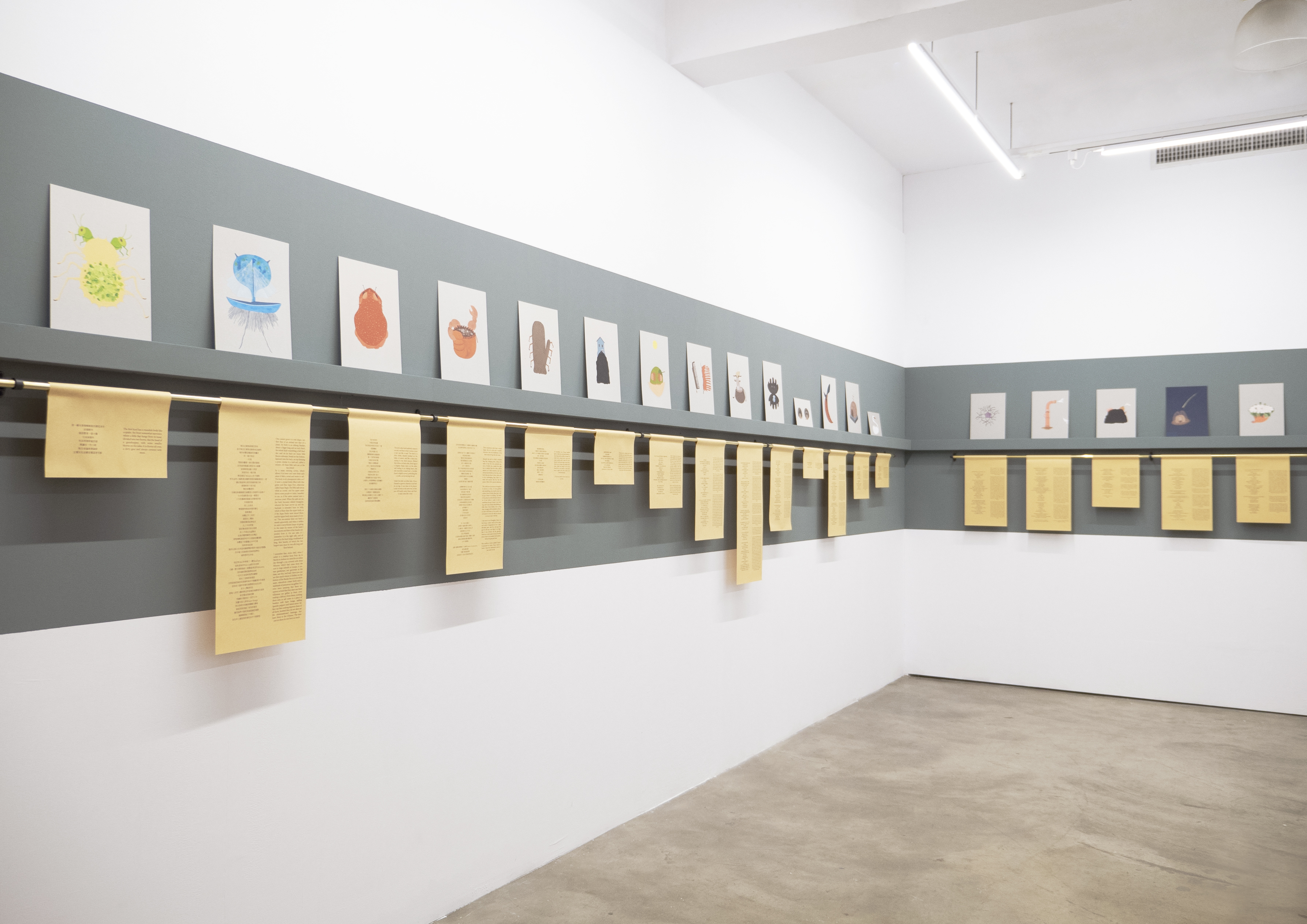
︎︎︎